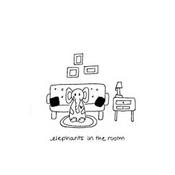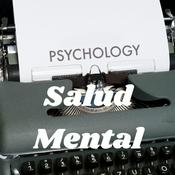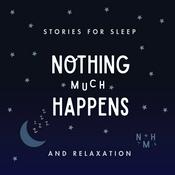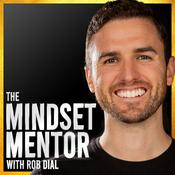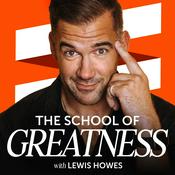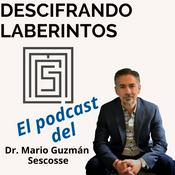Episodios disponibles
5 de 471
- These are the Four JhānasLeigh Brasington explains how the mind progresses through the four jhānas—from initial access concentration and the energetic, pleasure-filled first jhāna to the progressively quieter states of happiness, contentment, and equanimity—emphasizing their practical characteristics, traditional similes, and their role in supporting insight practice.💎 The Jhāna CommunityThis recording took place in The Jhāna Community. If you’re interested in accelerating your meditation practice, and want to explore many dimensions of jhāna, consider checking out our community of practice:💬 Transcript🤖 AI Transparency: The transcript below was lightly edited with ChatGPT to correct for spelling & grammar errors. Also – we like em-dashes – so we kept them. 🤪Leigh Brasington: So last week I talked about how to get to the first jhāna. You’ve got to get yourself settled. You’ve got to generate access concentration, which may take a while.There’ll be distractions. Label the distraction, relax, and come back. My favorite label is “story.” I am distracted, and I see I’m telling myself a story, and I just go “story,” and it goes away. Sometimes I’m telling myself a story about something I want to get, sometimes about something that shouldn’t be happening.Sometimes I’m telling myself a story because I’m bored with my breath and I just want better entertainment — and I’m a good storyteller. So: story, and it’s gone. But eventually the mind settles in, I’m not getting distracted, and I’m knowing each in-breath and out-breath. If I’m doing mindfulness of breathing and I stay there for a while, this is access concentration. And then I shift my attention to a pleasant sensation and do nothing else.This focus on the pleasant sensation has the effect of generating a feedback loop of pleasure, which eventually turns into the first jhāna. I’ll read you what the Buddha has to say about the first jhāna. This is from the second discourse in the Long Discourses — the Samaññaphala Sutta, the Discourse on the Fruits of the Spiritual Life: “Quite secluded from sense pleasures, secluded from unwholesome states…” Okay, that’s the abandoning of the hindrances, the getting past the distractions. Basically, you’ve got to abandon the hindrances temporarily.So this is the seclusion. It says one “enters and remains in the first jhāna, which is accompanied by thinking and examining, and is filled with rapture and happiness born of seclusion.” One enters and dwells in the first jhāna. So there’s the actual entering of the jhāna, and then there’s stabilizing it so that it lasts for a while.It says “thinking and examining.” The Pali words are vitakka and vicāra. Vitakka means thinking, and vicāra means examining or pondering. Unfortunately, in later Buddhism those words — but only in the context of the jhānas — got changed to “initial attention” and “sustained attention” on the meditation object. The Buddha would be shocked. I’ve done research on all the places in the suttas where vitakka shows up. There are 979 locations, all right? So it’s an important word, and it means “thinking,” always.I looked through to see if I could find any place where Sujato — I’m just looking at his translations — has “placing the mind” instead of “thinking,” and doesn’t have “keeping connected,” which is his translation of vicāra, and it’s not related to the first jhāna or the second jhāna. And I found all of them: none. Zero.Okay. Although you may hear that it’s initial and sustained attention to the meditation object — and you do have to do that, no doubt about it — but that’s not what these words mean. I suspect the reason for the change is that, as time went on, the understanding of the level of concentration needed to call something a jhāna kept increasing. And then they couldn’t have thinking. With this level of concentration, you couldn’t have any thinking and examining. You had to come up with something else to explain what was there. So they just took something that you did have, changed the meaning of the words — only in the jhāna instance — and stuck that in there. Not helpful.When you’re in the first jhāna, your mind is not really deeply concentrated. It’s like, “Oh wow, this is intense.” Because the next thing it says is that the state is “filled with rapture and happiness born of seclusion.” Rapture is pīti, and happiness is sukkha. And suddenly you’ve got all this excess energy — the pīti — and it’s like, wow. “Oh, this is intense. What’s going on here? Is this… this has got to be the first jhāna. I’m sure it’s the first jhāna. This couldn’t be…” Whatever. You’re commenting on it and you’re thinking about it.Now, it’s true it’s a little bit unstable, and so you do have to keep putting your attention back on it and not get lost in it. But basically what’s happened is that you’ve arrived in a state where the pīti comes up and predominates, and you have all this physical energy, and there’s some background happiness, and you’re commenting on the experience. That’s the first jhāna.It says one drenches, steeps, saturates, and suffuses one’s body with this rapture and happiness born of seclusion, so that there is no part of one’s entire body not suffused by rapture and happiness. Okay, this is an advanced practice. The first thing to do is get to the first jhāna once. Then get there the second time, which might be a little more difficult because you know it’s there and you want it. Okay? So don’t let the wanting get in the way. And then get in on a regular basis.When you first get in, it may be sort of the upper torso, neck, head — maybe the whole spine, probably not the whole body. Now, some people, when they get to the first jhāna the first time, yeah, it’s a whole-body experience. But for the majority of people, it’s upper body — particularly upper torso, neck, head, and maybe the spine.If you’re good at the first jhāna, then it’s possible to put your attention where it feels strongest — probably in the head area — and then move your attention to someplace where you don’t seem to have any pīti or sukha, like the arm. You’re not trying to move pīti: you’re just moving your attention, but the pīti will follow. And then you do the other arm, the lower torso, one leg, the other leg, and you’ve gotten the drenched, steeped, saturated, suffused. But I’m going to say this again one more time, redundantly: it’s an advanced practice. Get good at getting in and stabilizing what’s there.We have a simile: “Suppose a skilled bath attendant or his apprentice were to pour soap flakes into a metal basin, sprinkle them with water, and knead them into a ball so that the ball of soap flakes would be pervaded by moisture, encompassed by moisture, suffused with moisture inside and out, and yet would not trickle. In the same way, one drenches, steeps, saturates, and suffuses one’s body with rapture and happiness born of seclusion, so that there is no part of one’s body not suffused by rapture and happiness.”So this gives us an idea of what soap was like at the time of the Buddha. You didn’t go to the store and buy a bar of soap. You got your skilled bath attendant to take a metal basin and pour in the right amount of soap flakes, then the right amount of water, and then mix it together until you had a homogeneous ball of soap. The mixing is kind of frenetic. The energy of the first jhāna is very frenetic. Okay? So that’s really what’s going on. You’re dealing with all this energy, and then, when you’re really good at it, the water totally permeates the soap flakes, and your pīti and sukha totally permeate your body.Notice the body is mentioned here. It’s totally permeated with pīti and sukha. There is still bodily awareness, unlike in the Visuddhimagga, the later commentary. No bodily awareness there — you’re just checked out. But here in the suttas, there’s very definitely bodily awareness.Yeah, you get concentrated enough, you put your attention on a pleasant sensation, the first jhāna arises. The intensity level can vary quite a bit — not per person, but over a group of people. Some people will get it so intense it’s like sticking a finger in an electrical socket, blowing the top of your head off. Other people just get, “Oh yeah, this is kind of nice.” The pīti can show up as movement or as heat or as both. Usually it comes as one or the other — doesn’t matter. And the sukha is the emotional sense of joy or happiness, depending on how you interpret it, but it’s a positive mental state.If it’s mild, you could stay in the state for five to ten minutes. I’d say beyond ten minutes is not useful. If it’s intense, you wouldn’t stay as long. If it’s pretty intense, maybe you stay a couple minutes. If it’s very intense, maybe only 30 seconds. If it’s just way too much, maybe only ten seconds. And then the thing to do is to move on to the second jhāna.The trick for moving on — when you’re ready — is to take a deep breath and really let the energy out. Last week I said that when you’re getting to access concentration and your breath gets shallow, don’t take a deep breath because it takes you away from the jhāna. Yeah. Now that you want to go away from the first jhāna, take a deep breath, and on the exhale just really let the energy out. That will calm the pīti.This enables you to do a foreground–background shift. If this is the pīti and this is the sukha, then you take the deep breath and all of it calms down, but now the sukha is more prominent than the pīti. Pīti is still in the background. Focus on the sukha. That’s how you move from the first jhāna to the second.I’ll read you what the Buddha has to say:“Further, with the subsiding of thinking and examining, one enters and dwells in the second jhāna, which is accompanied by inner tranquility and unification of mind, is without thinking and examining, and is filled with rapture and happiness born of concentration. One drenches, steeps, saturates, and suffuses one’s body with a rapture and happiness born of concentration, so there is no part of one’s body not filled with rapture and happiness.”Okay? So, the thinking is supposed to all go away. I don’t usually get it to all go away, except maybe if I’m on a really long retreat. But for most lay people learning the jhānas, the gaps between the thoughts get bigger. The thoughts are more like, “Yeah, okay, this is nicer. How long have I been here? How long should I stay here? I’m starting to lose it — oops.” That sort of thing. As opposed to, “Wow, this is too much, I don’t think I want to stay here too long,” or “This is really cool, I’m going to tell so-and-so about it when I get out of my meditation period.” Not that kind of thing. More gaps. It’s getting quieter.Ideally, we get so quiet there is no thinking. The problem is: the kind of instructions you’re giving yourself about how to do this — is that counted as vitakka, thinking? Or is vitakka only the discursive thinking where you’re sort of going on and on? We don’t know. But I’ll say: don’t worry if there’s some thinking, as long as you can keep your attention focused on — now — the sukha, because the pīti is in the background and the sukha is in the foreground. So you’re focused on an emotional state. Unlike if you’re following the breath, you’re focused on a physical sensation; unlike in the first jhāna where you’re focused more on the pīti or the pīti–sukha, which is going to feel more physical. Now you’re focused on an emotional state. It may be a little more difficult for some people, but that’s the key thing you want to be focused on — the emotional state of happiness.And it doesn’t need to be extremely happy. In fact, if it gets too happy, the pīti comes back up, right? So you’re just being happy. It’s like: if this is the happiness, it’s the focus that’s strong, so you’re not getting distracted. The problem is that the emotional state of happiness is far more subtle than the breath or the pīti. I mean, the pīti is not subtle at all. And so you now have a more subtle object to focus on. But the pīti and sukha of the second jhāna are born of concentration. The concentration developed by the first jhāna hopefully gives you enough concentration to remain focused on the more subtle object of the sukha — and the remaining background pīti — of the second jhāna.And so you’re just sitting there being quite happy. The pīti has not entirely gone away; I find that in the second jhāna I’m sort of rocking — maybe this little swaying, something like that. In other words, it’s not still, but it’s not shaking; it’s not a lot of heat or anything like that. For me, the center of the experience has moved down to the heart center. It’s like the sukha is just coming out of my heart. It doesn’t feel like it’s my whole body at first.When you’ve gotten really good at the second jhāna, you could do the drench, steep, saturate, and suffuse again. But again, you’ve first got to find it, find it multiple times, get good at sustaining it. I would say for the second and higher jhānas, you want to learn to sustain them for at least ten minutes, maybe even fifteen minutes. Get in there and be able to stabilize that experience for an extended period.If it’s not full-body after you’ve gotten to where you can stabilize it, then you can play with trying to move it — which is to put your attention where it feels the strongest, like the heart center, and again, move your attention to the other parts of the body. You’re not trying to move the sukha — just your attention — and the sukha will follow along. And eventually, your whole body is filled with sukha.We have a simile: “Suppose there were a deep lake whose water welled up from below. It would have no inlet for water from the east, west, north, or south, nor would it be refilled from time to time with showers of rain, and yet a current of cool water welling up from within the lake would drench, steep, saturate, and suffuse the whole lake, so there would be no part of that entire lake which is not suffused with the cool water. In the same way, one drenches, steeps, saturates, and suffuses one’s body with a rapture and happiness born of concentration, so there is no part of one’s body not suffused by rapture and happiness.”So the picture is a lake far up in the mountains — no streams coming in, not even any rain — but a spring at the bottom of the lake. And the water from the spring completely permeates the lake, totally fills the lake. This is an incredibly accurate picture of what the second jhāna feels like.When I was first learning the jhānas, Ayya Khema was not reading out the similes, and so I’m back almost a year later for the next retreat, and she reads out the simile and I was blown away by the simile of the second jhāna. After she left the meditation hall, I go running after her: “Ayya Khema! Ayya Khema! It’s just like that — it’s just like that!” I mean, I was so struck by how completely, accurately this simile captures the feeling of the second jhāna — this wellspring of happiness coming out of your heart, for no reason other than you have a concentrated mind.Normally we’re out there looking for something to make us happy, right? Here, you’re just happy because — well — you’ve learned to generate the neurotransmitters of happiness via concentration. This can be kind of an interesting learning experience: the happiness is not out there; the happiness is in here. What’s out there is a trigger, and you find the trigger for generating the neurotransmitters, but you don’t have to have the external triggers. You do have to have a concentrated mind. And you can then trigger your own happiness. This can be a valuable thing.So as I say, you could stay in these states — ten, fifteen minutes is good to learn to do that. You could stay in longer than that. I’ve never stayed — I probably never stayed more than about twenty or twenty-five minutes in the second jhāna or any of the higher jhānas. It may run out. In other words, you have a finite amount of neurotransmitters ready to generate the happiness, and eventually, yeah, it sort of wanders away — which probably will dump you into the third jhāna. Or you can move there on your own.And guess what? The way to move there: take another deep breath and let the energy out. Let things calm down even more. You want to let the pīti calm down completely. It says here:“With the fading away of rapture, one dwells in equanimity, mindful and clearly comprehending, and experiences happiness with the body. Thus one enters and dwells in the third jhāna, of which the noble ones declare: ‘One dwells happily with equanimity and mindfulness.’ One drenches, steeps, saturates, and suffuses one’s body with a happiness free from rapture, so there is no part of one’s entire body not suffused by this happiness.”Okay, so by definition the pīti is gone. It may fade away because you’ve run out of the neurotransmitters that generate it — you’re hanging out in the second jhāna and the pīti just disappears and everything calms down further, and that takes you to the third jhāna. But it’s good to learn how to move intentionally, particularly if you’re on retreat learning the jhānas. You want to move intentionally because when you go home, you’re not going to have as much concentration. And so sitting around waiting until it moves on its own maybe is not going to be an option. But if you know how to move, yeah — you’ve been in second jhāna for ten minutes and it’s like, “Okay, I’ll go find the third jhāna.”You take the breath and the pīti hopefully goes completely away, and the sukha calms down to not so much happiness as contentment — wishlessness, satisfaction. It is a state of satisfaction so profound that if Mick Jagger were to practice the third jhāna, he wouldn’t be able to sing that song. He would be satisfied.Okay. One thing I found that’s helpful: I take the breath, and the intensity level of the sukha — the happiness — starts decreasing. And then I can remember an incident in my life where I was very contented, and pluck the feeling of contentment out of that incident, and then my mind just settles into that. So it’s a transition state — probably takes me, yeah, on retreat maybe two or three seconds. At home, more like five or ten seconds before it settles.So you’ve got to have a brief memory of a contented experience. I don’t know — you’ve just eaten the perfect meal, you didn’t overeat, and you don’t have to wash the dishes, right? Okay. So you remember the feeling of that, and pluck from that feeling the contentment, and focus on that feeling, and it will stabilize.It says, “One dwells in equanimity, mindful, clearly comprehending.” Yeah — you’re pretty much locked into this experience. You’re aware this is a really good place to be. It doesn’t have the agitation of the pīti like the first and second jhānas did. It’s much more equanimous. It’s still pleasant — being contented is quite pleasant. So it’s not emotionally neutral, but again, you’re focused on an emotional state, a positive emotional state.Most people say that going from first to second is a dropping down of the center of the experience. Going from second to third is dropping down even further — slide to the belly or something. I’ve had students come into an interview and they say, “I was in second jhāna and I went down,” and I don’t know whether they meant down numerically to the first jhāna or down kinesthetically to the third jhāna. The kinesthetic dropping is that obvious — really quite a feeling.One time I was doing meditation for science, and I showed up and they wanted to put me in an fMRI so they could look at my brain. And they wanted to tell me when to move between the jhānas. And they said, “We’ll tell you to go up or down.” And I said, “No, no — up or down is not going to work. You’re going to be thinking numerically, and I’m going to be thinking kinesthetically. I’m going to be in two and you’re going to say ‘go up,’ and I’m going to go back to one when you meant for me to go to three. You can say previous and next.” And that’s what we did, and it worked out just fine. The up and down really is quite striking as you go down through the first four jhānas.Again, it probably isn’t encompassing your whole body. Put your attention where it feels the strongest — maybe in the belly — and move your attention, not the contentment, just your attention, to the other parts of your body, and you can feel it.Okay. One thing I found that’s helpful: I take the breath, and the intensity level of the sukha — the happiness — starts decreasing. And then I can remember an incident in my life where I was very contented, and pluck the feeling of contentment out of that incident, and then my mind just settles into that. So it’s a transition state — probably takes me, yeah, on retreat maybe two or three seconds. At home, more like five or ten seconds before it settles.So you’ve got to have a brief memory of a contented experience. I don’t know — you’ve just eaten the perfect meal, you didn’t overeat, and you don’t have to wash the dishes, right? Okay. So you remember the feeling of that, and pluck from that feeling the contentment, and focus on that feeling, and it will stabilize.It says, “One dwells in equanimity, mindful, clearly comprehending.” Yeah — you’re pretty much locked into this experience. You’re aware this is a really good place to be. It doesn’t have the agitation of the pīti like the first and second jhānas did. It’s much more equanimous. It’s still pleasant — being contented is quite pleasant. So it’s not emotionally neutral, but again, you’re focused on an emotional state, a positive emotional state.Most people say that going from first to second is a dropping down of the center of the experience. Going from second to third is dropping down even further — slide to the belly or something. I’ve had students come into an interview and they say, “I was in second jhāna and I went down,” and I don’t know whether they meant down numerically to the first jhāna or down kinesthetically to the third jhāna. The kinesthetic dropping is that obvious — really quite a feeling.One time I was doing meditation for science, and I showed up and they wanted to put me in an fMRI so they could look at my brain. And they wanted to tell me when to move between the jhānas. And they said, “We’ll tell you to go up or down.” And I said, “No, no — up or down is not going to work. You’re going to be thinking numerically, and I’m going to be thinking kinesthetically. I’m going to be in two and you’re going to say ‘go up,’ and I’m going to go back to one when you meant for me to go to three. You can say previous and next.” And that’s what we did, and it worked out just fine. The up and down really is quite striking as you go down through the first four jhānas.Again, it probably isn’t encompassing your whole body. Put your attention where it feels the strongest — maybe in the belly — and move your attention, not the contentment, just your attention, to the other parts of your body, and you can feel it.🔗 Links* Samaññaphala Sutta (DN 2)* Vitakka & Vicāra (Pāli terminology overview)* Pīti & Sukha (Pāli term definitions)* Visuddhimagga (The Path of Purification)* Satipaṭṭhāna Sutta (Foundations of Mindfulness)* Ayya Khema (teacher referenced by Leigh)* Pa-Auk Tawya Sayadaw (Venerable Pa-Auk)* Manjushri (Bodhisattva of Wisdom)* Mick Jagger* fMRI (functional magnetic resonance imaging) Get full access to Buddhist Geeks at www.buddhistgeeks.org/subscribe--------43:15
- Entering the First Jhāna🤖 AI Transparency: The transcript below was lightly edited, for both spelling & grammar errors, using ChatGPT. In this talk jhāna teacher Leigh Brasington draws on teachings from his teacher Ayya Khema, offering a clear, practice-based guide to entering the first jhāna, a meditative state of joyful concentration described in early Buddhist texts.A Jhāna RetreatIf this sounds like your jam, consider joining Vince Fakhoury Horn & Brian Newman for The Flavors of Jhāna retreat, this coming January in Portugal.💬 TranscriptLeigh Brasington: Very nice to be here, I appreciate the invitation. I always like talking about the jhānas—very interesting topic. So what I’m going to do today is share the basic instructions for how to enter the jhānas as I teach them. I learned them from Ayya Khema. Actually, I stumbled into the first one when I was on retreat with Ajahn Buddhadasa in Southern Thailand. I didn’t know it was a jhāna. They told me I was experiencing pīti. I knew I liked it. It changed my practice from something I knew I should do to something I wanted to do. Just the pleasure of it—yeah, I’m a greed type—okay, here’s a nice source of pleasure.The jhānas are eight altered states of consciousness. Actually, in the suttas there are four jhānas and four immaterial states, and it’s not until much later that they’re referred to as the eight jhānas. That’s convenient if you want to talk about the four immaterial states and the four jhānas at the same time, but they’re definitely different in the suttas. We do find many suttas where there are the first four jhānas and then three or four of the immaterial states, so it’s a pattern that makes a lot of sense.Most of the Buddhist teachings are in three categories: sīla, samādhi, paññā—ethics, concentration, wisdom. Sīla is morality, keeping the precepts. Samādhi is usually translated as concentration, but I actually prefer “indistractibility.” Concentration’s got that furrowed-brow thing—people try too hard and it doesn’t work. That’s one problem with teaching jhānas.I give students two warnings at the beginning of a retreat. First: if you have expectations, you’re in trouble. Expectation is wanting—the first hindrance. Over and over again the Buddha talks about the abandoning of the hindrances as a prerequisite for entering the jhānas. The other warning is that if you start fooling with concentration and you have any unresolved issues, they might come up. Hopefully none of you have unresolved psychological issues—but yeah, seems to be a problem for humans.Then paññā is wisdom. Basically what the Buddha is saying is: clean up your act, learn to concentrate your mind, and use your concentrated, indistractible mind to investigate reality and understand what’s actually happening.The jhānas in the suttas are frequently preceded by the abandoning of the hindrances. You might notice when you’re meditating and get distracted, you could label most distractions with one of the five hindrances: wanting, not wanting, sluggishness, restlessness, remorse, or doubt. What’s really necessary to enter the jhānas is a mind that’s relatively quiet.In later Pali literature it talks about “access concentration.” I’ve adopted that phrase to describe what you have to generate before entering the jhānas—not the deep concentration described in the Visuddhimagga, but good enough to have a chance at the jhāna as described in the suttas.So, basic instructions. Sit in a comfortable, upright posture—comfortable enough that it doesn’t generate aversion, but not so comfortable you fall asleep. Once you’re settled, put your attention on your meditation object. The Visuddhimagga mentions about thirty possible objects for developing access concentration. Most people work with mindfulness of breathing—the most common. Others use mettā meditation, or any of the brahmavihāras. A body scan works too—just slowly noticing sensations through the surface of the body without trying to change anything.Some teachers, like Ajahn Sumedho, teach using the nāda sound—the subtle ringing you can hear when it’s quiet. That can work too, though I don’t recommend it unless you want to hear that sound forever. A fifth option is a mantra. If you do a mantra until the mantra starts “doing you,” that’s a sign of good concentration.If you’re using the breath, you might notice some signs as you get concentrated. A diffuse white light may appear. That’s called a nimitta—just a sign that concentration is strong. Don’t do anything with it; it’s like a road sign telling you where you are. Later Buddhist texts describe a bright circular light, but the suttas don’t mention that. Still, if you see it, good—you’re concentrated.As concentration deepens, the breath may become shallow or even seem to disappear. Don’t worry—you’re not going to die. Your body knows how to breathe. What’s happening is that your body doesn’t need as much oxygen because you’re still and calm. If you notice the breath slowing down, resist the temptation to take a deep breath. That resets the chemistry that helps bring on the first jhāna.So: you sit, settle, put attention on your object. When you get distracted, label the distraction, relax, and come back. Labeling helps disidentify from it and shows where the mind tends to wander—wanting, aversion, past, future. Notice how seldom the distraction is in the present.Relaxation is key because most distractions create tension. Just relax and return to the breath—or whatever object you’re using—letting it flow naturally. Access concentration is being fully with the object, with only wispy background thoughts like, “Is this what he meant?” instead of full-blown planning.Once you realize you’re in access concentration, stay there for five to fifteen minutes. Time will feel distorted, so just hang out. If you’ve been there long enough—or your breath is so subtle it’s not usable as an object—there’s a trick: drop attention on the original object and shift to a pleasant sensation.If you look at statues of the Buddha, he’s always smiling—that’s a teaching. Try smiling slightly and notice the pleasantness of it. Focus on that pleasantness. For some people it’s the hands—a warm, tingling glow. For mettā, the heart center. It could be anywhere: third eye, top of the head, shoulders, feet—whatever’s pleasant.Once you’ve found a pleasant sensation, here comes the hard part: do nothing. Just enjoy it. Anything you do will mess it up. Remain focused on the pleasantness itself. If you stay steady, the pleasantness will intensify gradually, building until it erupts into pīti-sukha—physical rapture and emotional joy.The instructions, in short: sit, settle, focus on your object; label distractions, relax, return; stay non-distracted; find a pleasant sensation; focus on it; do nothing else. The jhāna will find you. You don’t do jhāna—you set up the conditions for it to arise.The most common problem is jumping too soon—grabbing at pleasant sensations before concentration is stable. Wait until you’re really steady. Another problem is trying to make something happen or getting excited when it does—both break concentration. You can’t enter jhāna and stay in control. You have to let go into the experience.Ayya Khema said, “Letting go is the whole of the spiritual path.” That applies here. The first time the jhāna comes, it might feel mild or like it’s blowing the top of your head off—either is fine.The length of time to stay in the first jhāna is inversely proportional to the intensity. If it’s strong, 20–30 seconds is plenty; if mild, up to 10 minutes. When you’ve had enough, take a deep breath to release the energy, then focus on the sukha—the emotional pleasure. The first jhāna is pīti with background sukha; the second is sukha with background pīti.The purpose of the first jhāna is to get you to the second. If you’re concentrated enough, you can enter any jhāna directly, though that usually takes years of practice.You could think of the mind like a still pond. Normally it’s wavy; concentration calms it. Then you drop in a pebble of pleasure, and the ripples bounce and reinforce until they rise as a geyser—that’s the first jhāna.I suspect pīti involves dopamine breaking down into norepinephrine, and sukha involves opioids like serotonin. I’m a retired computer programmer, not a neuroscientist, but Jud Brewer thought that made sense. Focusing on the pleasant sensation is rewarding—it releases dopamine, which stimulates the nucleus accumbens, generating opioids. The norepinephrine explains the heat or vibration some people feel.So essentially, you’re setting up a feedback loop of pleasure. Everything we experience is neurotransmitters; this is just a skillful way of using them to shift consciousness. The first jhāna alone won’t give deep enough concentration for strong insight—that develops more in the higher jhānas, especially the third and fourth.So, by the time you get to the third and fourth jhānas, your concentration is deeply enhanced. The first jhāna is mostly about learning how to make the mind happy. It’s a wholesome form of pleasure, because the hindrances have been set aside. It’s blameless pleasure. The Buddha said it’s a pleasant abiding here and now. It’s not sensual pleasure—it’s mental pleasure.You can’t be lustful or hateful and be in the jhānas at the same time. The hindrances have to be abandoned first. So, the first jhāna is a good antidote for desire, aversion, restlessness, doubt—all of that.If you look in the suttas, you’ll see that the Buddha talks about entering and abiding in the first jhāna, then emerging and reflecting on it. He often says, “He enters and abides in the first jhāna, then emerges mindful and clearly comprehending.” The reflection part is where insight comes in.You can look back and notice what was present and what was absent. “Okay, in that state, there was one-pointedness, there was rapture, there was happiness. There wasn’t anger, there wasn’t craving, there wasn’t restlessness.” You begin to see the conditionality of mind states—how some qualities lead to happiness and peace, and others to agitation and suffering.That’s insight. Seeing cause and effect directly. And the more concentrated the mind, the more subtle the distinctions you can notice.Now, I should emphasize: the jhānas are not necessary for awakening. There are people who wake up without ever entering them. But they are very helpful. The Buddha himself discovered the jhānas as a young man, then later realized they were a useful foundation for insight. He used them as part of his own path to awakening.The first jhāna trains you to gather and steady the mind, and to be at ease with pleasure that doesn’t depend on external conditions. You can use that stability and joy to look into impermanence, unsatisfactoriness, and non-self.It’s like building a campfire. You need enough kindling to get it going, but once the fire is burning steadily, you can cook something useful. Concentration is the kindling; insight is the cooking.People sometimes get attached to the jhānas. It’s understandable—they’re very pleasant. But they’re not the goal. They’re a tool. They show you that the mind can be trained, and that happiness doesn’t have to come from the world—it can arise from the mind itself.And, importantly, they show that pleasure isn’t the enemy. The Buddha didn’t advocate self-torture; he advocated wisdom. Pleasure used skillfully can support wisdom. The pleasure of the jhānas is wholesome because it’s not mixed with craving or clinging.When the Buddha first described the Middle Way, he said it avoids the extremes of sensual indulgence and self-mortification. The jhānas are the perfect expression of that. They’re pleasure that’s blameless, balanced, and leads onward.If you keep practicing, moving through the first, second, third, and fourth jhānas, what happens is that pīti—that energetic, bubbly joy—drops away. The mind becomes more serene, more equanimous. By the fourth jhāna, it’s just pure awareness, neutral feeling, total balance.That’s the foundation for deep insight practice. In that stillness, you can start seeing impermanence very clearly. The slightest movement in the mind stands out. You can watch sensations arise and pass with precision.So, to sum up: the first jhāna is pleasure and joy born of seclusion. You get there by letting go of the hindrances and focusing on a pleasant sensation until it amplifies. The second jhāna is pleasure and joy born of concentration itself—more stable, less effort. The third is equanimous pleasure—contentment without excitement. The fourth is pure equanimity and mindfulness.The jhānas are not something you force; they’re something you allow. You set up the right conditions, and the mind naturally inclines toward stillness and happiness.And then, when you emerge, you use that clarity to investigate. That’s where the liberating insight arises—not in the absorption itself, but in seeing how it all functions.The Buddha described this process as samādhi-paññā, concentration leading to wisdom. The jhānas are simply one way, one very skillful way, to cultivate that. Get full access to Buddhist Geeks at www.buddhistgeeks.org/subscribe--------35:05
- Is the Insight Tradition Complicit in Genocide?Vince Fakhoury Horn reflects on his experiences within the Insight meditation tradition, as an authorized teacher in the lineage, arguing that its senior leaders have remained complicit, through their silence, on the genocide of Palestinians in Gaza.💬 TranscriptVince: Today I want to speak to you as an authorized representative of the Insight meditation tradition. I was authorized to teach—empowered to teach—by Trudy Goodman and Jack Kornfield in a public ceremony in Los Angeles several years ago.This is largely going to be a story about my experience with the Insight meditation tradition and a kind of out-loud contemplation and meditation on how this tradition, from my point of view, has ended up two-plus years into what I saw, and see still, as a genocide in Israel with the Gazans—the Palestinians in Gaza—and how the Insight tradition has remained silent, largely silent, on such an important issue, one of the moral issues of our time, I think.And of course, I have to acknowledge as a Palestinian American, my view is informed by my own history. But I also want to say most Americans have no clue what the history is here. And I run into this every single day as I talk to people, as I try to share my honest experience—not hide—to be courageous and open about what it’s like to be a Palestinian living in America today, watching people that I care about be murdered, watching my family in the West Bank be terrified as they live in conditions which I could only describe as concentration-camp-like conditions.Two of my close family members here in Western North Carolina—two members who married into the larger clan of Fakhourys that live here. The last name of my grandfather was Fakhoury—Latif Fakhoury. He raised me; he was my father basically; I called him Pops. A number of family members live here in this area who immigrated here so they could get support from each other.Two of them have shared that they’ve both lost over 200 family members in Gaza. I want that to land with you for a second.Two hundred. That’s a whole family tree. People are losing family trees.So to me, as a Buddhist practitioner and as a Palestinian American—as someone who cares about things like this—I’m just completely, utterly fucking heartbroken, and I have been for the last two years. And I feel like during that time I’ve waited, I’ve waited, I’ve waited for the leaders of my own lineage—for my own teachers—to take a courageous moral stand. And the reality is they have not. And I don’t think they will.And so how in the world did we get here? I’ve been thinking about this a lot, and I’ve been looking at my own disappointment and disillusionment around it. And I’ve been disillusioned and disappointed before by teachers—you know, I’m not new to this game. I’ve been a teacher for 15 years. I’ve seen people get disillusioned and disappointed with me. That’s, in part, normal.But this is not. I want to claim that this is not normal. This is an abdication of moral responsibility at the deepest level.And I guess it’s not that surprising to me as I reflect back on my own experience with this tradition. When I first started engaging in the Insight tradition, around 2003, I went up for my first retreat at the Insight Meditation Society in Barre, Massachusetts. It was with Joseph Goldstein and a number of other teachers, who themselves had just exited a six-week retreat with Sayadaw U Pandita, a famous Burmese meditation master who was christening the new Forest Refuge long-term retreat facility with a retreat for the teachers of the Insight tradition.And for me, this was like falling in love. It was exactly what I was looking for—the hardcore retreat experience. I had been reading Daniel Ingram’s work prior to this—my first teacher—and he advocated for this hardcore contemplative approach. So it was great. I fell in love. I loved the Buddhist tradition. I loved the teachings. I loved the opportunity to go deep and be hardcore in my practice.But I noticed even then—me, a millennial practicing in an almost completely Boomer culture—that the politics of the place were weird. I remember complaining about this many times to my partner and other friends: how we would go on these retreats and the teachers would act apolitical, but then they would proceed to share reams of political opinions in their Dharma talks—some of which I agreed with and many of which I did not.And I found their political views to be quite homogeneous and quite apparent, and yet somehow being couched in apolitical terms. That was the first thing I found odd.So now when I look at it, this is a modernist movement. This is a modern movement. And part of what one does in the modern world, especially in the marketplace, is you depoliticize things. It’s not smart business to bring politics into your product or your offering.Right—but this isn’t exactly a product, and this is, I think, one of the challenges of bringing Buddhism into the modern world, especially into America, the hyper-capitalist capital of the world. How do you not lose the spirit and essence of the Dharma when adapting to a new environment? How do you not leave something transformative and powerful on the table by not being willing to adapt to the new environment?I want to hold this tension here between conserve and adapt throughout this monologue if I can, because I think it’s a really important generative tension.But in my experience with the Insight tradition, when I first started engaging with it in the early aughts, they were caught in a kind of paradox around their own obvious political views—which were liberal, maybe progressive-leaning, leftish. Very Boomer-centric in terms of a particular kind of generational politics.And I found it very awkward and weird practicing in those environments. But it was okay. I could deal with it. I could handle it. Some ten years later, as the times changed and as the traditions changed, I noticed that increasingly the Insight tradition—starting with Spirit Rock, the more liberal of the two major centers in California, and then following that, the Insight Meditation Society—began making the politics more explicit. They started to own the values of inclusion and wanting to make this available not just to young people (which was kind of their initial politics of attracting the next generation), but also to people of color and the LGBTQI community and all of these different historically marginalized groups they wanted to explicitly include and make space for.They began to examine some of the cultural conditions they have around the practice, to see the impact and influence of American WASP culture—White Anglo-Saxon Protestant culture. And they started to realize, “Oh, even though we went to Asia and did all this stuff, of course we still have this conditioning. And it’s fine for us, and it’s fine for anyone like us, but it’s potentially problematic for other people.”An example of this: many people who are non-white come to meditation retreat centers and then are told to be silent. They hear that from a different point of view. They don’t hear it from the perspective of members of the dominant culture, who can just be quiet and be okay. Rather, they’re coming from a point of view of having felt like they were silenced—often systematically silenced—and then they’re entering into an environment where they’re told to be quiet again.This is an example where the Insight tradition, I think—and I want to praise the Insight tradition here—has done a good job of wrestling with these very challenging questions of how to teach Dharma in a multicultural, postmodern world. And this is a transition, I think, from modern to postmodern: when you start to actually include voices that have been historically marginalized; when you start to become aware of those power differentials and the history there; that is a kind of awakening to a new level of understanding.In the developmental psychology world, they would call that Pluralism or Postmodernity. And I think it’s really important, because you can take a view on the modern meta-narrative, on the grand story of what modernity is. It’s about progress and it’s for all people, etc., etc. It’s like, “Oh yeah, that’s beautiful, but in reality, how does it actually work? Where did all this wealth come from that we’ve accrued as modern people? Who’s left out?”These are the questions I think you have to start asking if you want to move past the modern mode.And my teachers did that, and I learned a lot from them in the process. Not just from them— from others as well— but I went through that journey with them as I was training very seriously. I watched their initiatives at their own retreat centers, and that informed how I taught. That informed my views. And I began to believe that, in fact, they were integrating this pluralistic wave of development—this inclusive mindset that can include people regardless of their backgrounds and regardless of their histories: include them financially, include them culturally, etc.Now, of course, in practice this has been a painful implementation. I’ve seen behind the scenes of that quite a bit, having been married to someone who has worked both inside the Insight tradition as a teacher—teaching at places like Spirit Rock—and who also trained for eight years as a mindfulness meditation mentor in Jack Kornfield and Tara Brach’s Mindfulness Meditation Teacher Certification Program. We just called it at home the “MMTCP,” because you couldn’t repeat that many times.So I very much got to see, from their point of view and my own, that the tradition has done a lot in its attempt to include these areas and topics which have historically been excluded.I want to zoom into a particular time period now, which was the murder of George Floyd during COVID. I was leading, along with my wife and several colleagues, an online retreat just after George was murdered.During that retreat, all of the people teaching presented as white and looked white. I probably was the only person on the teaching team who wasn’t completely white. And we went in just teaching the standard retreat that we would. We would talk about politics and we’d talk about the world, but we did it in abstract and universal terms—talking about the importance of connecting these things but in the abstract. And we didn’t really know how to deal with this. Like, we honestly just were not prepared to be able to hold the pain and grief and anger that was triggered, rightly so, for many of the participants—especially the Black American participants.And I remember in one group— a private group that I was holding with like 10 or 15 people— one of the participants, African American, completely lost their shit on me, in the most righteously good way possible. It was just like, “How can you be teaching this stuff and not speaking directly to the issue of George Floyd?”To which I did not have an answer. Because I was scared—that was the true answer.As I sat there for an hour in this group, unable to pretend that I was the authority in the room anymore but also responsible for this retreat, I sat there basically listening and feeling incredible anxiety. Afterwards, that experience really helped shift the balance for me. It tipped me over into a deep inquiry about the racialized harms that I had experienced myself as a Palestinian American—and that were happening for others continuously, beyond my view.It’s not like I didn’t know this was happening. I just wasn’t looking at it. And I didn’t have to look at it in the same way some of these folks do, because it wasn’t my lived experience. But that was no longer sufficient. I had to come to terms with the complexity of ethnic and racial identity, the complexity of racialization, the way that we racialize each other.One of the reasons I’ve always been resistant to the whole pluralistic “woke” movement is because I’ve spent time in those spaces—like at Naropa University, where I did my undergrad; at Spirit Rock; and a number of other institutions that were, I would say, largely pluralistic. And what I found was—particularly from my white colleagues—that they would almost invariably start white-bashing and male-bashing both. And they would assume that I was white and then include me in the bashing, expecting me to jump in and sort of join.And I’d get upset, because I was being “misracialized.” They didn’t know who I was. They were looking at me, looking at my skin color, whatever, and they were assuming stuff about me. And then they were using that to attack me. That was how it felt. And I think that’s how a lot of people feel in America, to be honest with you. And it’s challenging. And it’s problematic in so many ways when we judge each other on such a superficial basis—that’s racialization. We don’t know each other’s backgrounds. We don’t know each other’s cultural or ethnic histories. We just assume, based on superficial characteristics, “I know this person. I know their history.”Okay—that’s problematic.So I was always averse to that kind of culture because I saw it being largely toxic in practice. But it also seemed like there were some important points, you know? It wasn’t completely wrong.And I realized that in a lot of ways I had been hiding behind my own privileged position—where I could actually hide. I could “pass” as white. Passing is a known phenomenon: if you appear racially one way and aren’t, then you can hide. And here’s the thing—it makes sense. It makes sense to hide if you’re actually in a culture where it’s unsafe to be that part of you.As an Arab—ethnically Arab American, Caucasian Arab—I knew it was unsafe to be Arab since September 11th, 2001. Since I was a teenager I saw people in my own family targeted, and systematically targeted. So it really makes sense, I think, on a personal level, when people can pass a certain way, to do so.But what I realized was: I had been passing. I had been hiding. And then I was angry and upset when people didn’t see who I was. You can’t be angry and upset if people don’t see who you are, if you’re not telling them who you are. So I realized I had been a coward. I had not been being who I am, and I’d not been standing for my own people—the people who were part of my heritage: my grandfather and his lineage. I had not been ashamed, but I had not been courageous or willing to own that part of my identity.So I started, from that point on—this was several years ago—owning more explicitly that part of who I am, talking about it more openly, going by Fakhoury in my name, presenting myself with that name. For me that was a huge deal. And I felt that I had the support of my teachers to do that because of the pioneering work they were doing—pushing into those areas.And overall, I think there was a lot of alignment at that time with the Insight tradition.Now, I want to actually go back in time a little bit, because the way that I was authorized to teach is maybe a little unusual. Initially, I was invited by Jack Kornfield and Trudy Goodman, two of my close teachers. I was living in Los Angeles at the time—this was in 2011—and I was invited to apply to the next Insight meditation retreat teacher program.This is a four-year retreat teacher training. Some 20 or so people are typically in each cohort. It’s considered to be the highest level of training in that tradition. My wife and I were both invited to it—Emily and I were both invited. I filled out an application, and I was told the context was: “We’re inviting 20 or so people to apply, and we’re going to accept 20 or so people.” So the application process—they said they would consider the applications, but it didn’t seem like many people were going to be cut.So I filled out the application. I shared about my Dharma background, about my history, who I’d trained with, and what I was interested in. And I shared my ethnic background. I talked about my Palestinian family. This was really important to share at the time, because this was the time in which that lineage was really pushing hard into the pluralistic space. And so I felt like I really should share that this is part of who I am, and I thought that would be considered welcome.Then after I applied, I got a call from Jack, and he said, “Your application to this training has been rejected.” And the reasoning he gave—he said it wasn’t him; it was other teachers—and I’ll let you figure out who the other teachers were. “These other teachers don’t like your association with Daniel Ingram,” he said. That was the primary reason they didn’t want me in this training.Daniel had been quite critical of teachers at the Insight Meditation Society, and particularly he had been critical of Joseph Goldstein publicly. And I was kind of shocked by this, because I myself had never been publicly critical of these teachers in that way—although I still was associated with Daniel and I’d even give him a place to air his opinions and perspectives. I also was recording with teachers like Jack and Joseph and Sharon. I was giving them a lot of airtime on the Buddhist Geeks Podcast, and I was really interested in their perspectives.So I felt like I had a foot in both worlds. I was holding both the Insight tradition and the Pragmatic Dharma tradition—both of which originally have connections to the Mahasi Sayadaw tradition, the Burmese tradition I mentioned earlier. So for me it was just like, “Okay, these are two squabbling cousins, and I find value in both of them, and I’m not going to let go of either of them because I get different things from each. And I think they’re both important. And together, when you hold both of them, you get a bigger and more inclusive and more integrated whole.”So I was kind of surprised at how petty that reasoning was—how egoic. This was one of my first bigger disillusionments with teachers: realizing, “Oh yeah, they’re human.” Yeah, totally. But at the time it was really disturbing. I got extremely upset.I remember talking to Trudy. At the time, Trudy and Jack were dating—they later became married—but they were dating; they were close. Trudy was definitely more of a close teacher than Jack in terms of access and time I’d spent with her. And she—very much to her credit—went to battle for me with Jack, with the other teachers. She was like, “This is ridiculous.” And she was right. It was ridiculous.And Jack later came back to me and said, “Okay, well, you have a spot if you want it now.” So I was accepted into the program. But at that point I was so upset that I was like, “No. Fuck you.” Basically. Like, why would I want to be participating in a program with people who are offering up these reasons? If my association with Daniel Ingram makes me unqualified to be a teacher—okay.And I felt like at the time Buddhist Geeks was sufficiently big of a thing that I didn’t have to have that reputation or credibility derived from this training.Now, my wife on the other hand didn’t have the same situation. And I encouraged her to do the training. She did the training; she completed it. Later, some years later—probably 2017, somewhere around there—we got a call from Trudy and Jack. We talked to them, and they invited Emily to a lineage authorization ceremony that was happening in LA, and then almost, “Oh yeah, Vince, you should come too.”It was a little awkward in that it was clear to me they hadn’t planned on inviting me until we were all talking. And then it was like, “Well, I guess we’re excluding you, and that doesn’t make sense.” And they did—they invited me to become authorized as a teacher in their lineage.So I accepted. And at that time I had kind of worked through my frustration and anger—this had been years later—and became authorized in that tradition. I’m now part of that lineage. That’s the truth.I’ve looked back—even at the time, but now especially—over that whole situation, where I had a couple of teachers who I had a close relationship with and who were willing to fight for me. Otherwise, that entire tradition did not want my kind of person in the tradition.What kind of person? Loud, outspoken, opinionated, not toeing the party line on a number of issues.And furthermore, I wondered: to what degree was my Palestinianness an issue? Now, it was never brought up. It was never like, “Oh, that’s an issue for us.” But from the very moment that my application was rejected, I had to ask the question: Was that a factor? You know, this is largely a Jewish group of teachers—could they be biased against Palestinians?Now, I had no direct evidence or reason to think that they were, but I had this sort of felt sense of like, “Oh… could be.” And maybe, if they’re biased about my associating with Daniel Ingram, why wouldn’t they be biased about my being Arabic or Palestinian? Quite possibly, given the history.So that planted a seed of doubt—of questioning—in my mind about where people are coming from.Fast-forward now to 2023, October 7th. Of course we know the history. And one thing that I felt like I had always been able to rely on were my teachers. And that stopped being true. And not just with Jack and Trudy. It stopped being true also with other teachers.I suddenly found the entire American Buddhist Dharma scene was progressive on everything but Israel. I felt alone, largely. And I spent the first year after October 7th alone, feeling alone. I didn’t receive contact from any of my teachers—no one reached out to see how I was doing, to see how my family was doing. And I didn’t reach out to them. I felt like it was not appropriate. I felt like as teachers, and as Jewish Americans, and given the context and the situation, it was appropriate for them to make first contact. But they never did.I lost a number of Israeli students as well—students I had been in contact with—who I had personally reached out to after October 7th to check in on them, to see how they were doing, to see if they were safe, if their families were safe. And then all of them vanished afterward. I haven’t heard from them since. And it was just so obvious to me: no one wants to touch this. This breaks the whole fucking paradigm. The whole pluralistic thing. All of this attempting to include all these different groups—this issue breaks that. It’s too complex. It’s too close to home. It’s too real.And what I’ve seen is that, by and large, the leaders of the Insight tradition—Joseph Goldstein, Sharon Salzberg, Jack Kornfield; I’ll include Trudy Goodman too, to more or less degrees—have remained silent on the genocide in Gaza.In Jack and Trudy’s case, I think they’ve made some very minimal, performative attempts to include it. In Jack’s case, apparently he referenced it somewhere in an email. I didn’t get this email; I haven’t seen the email; I don’t know what was said in the email. But that was the sort of defensive position that I heard from them. That was their justification for how they had “taken a stand.”And in Trudy’s case, I’ve been following her closely online. You know, we had a very difficult private conversation around this a few months ago when I finally reached out. I was like, “Hey, what the fuck? Why are you completely not showing up for me, or for people who are being genocided in Palestine?”And in her reply… it was something. She talked about Sudan and her closeness to the genocide in Sudan and how much she cared about that. And she has been vocal about that.And I just didn’t understand how that related to anything at all. It was like, “Okay, great. I think that’s awesome. I really admire that you care about the people in Sudan, and that you care about the horrendous genocide that’s happening there. That’s important. You should care. We should care. This does matter.”At the same time—and I pointed this out—the United States’ involvement in that conflict and that genocide is very different from the United States’ involvement in what’s happening in Gaza. The United States is a direct enabler in the case of Gaza. It is sending bombs. It is sending weapons. It is providing political cover for the situation.And not only that—Israel is using Jewish identity as a shield for committing genocide.And so I told her: “As a Jewish American, you have a unique responsibility to speak up against this atrocity. And you have a unique amount of leverage. Your identity is being leveraged as a weapon, and you can fight against that. You are an American; you have influence.”Trudy responded, “I don’t have as much influence as Jack.” That’s bullshit. I told her that’s bullshit. Of course you don’t have as much influence, but you have way more influence than I do. You reach a lot more people than I do. You have a reach. I remember Alexander Bard, the Swedish internet philosopher, said: Reputation equals credibility multiplied by reach.Trudy has a stellar reputation. And so I just didn’t buy that. I thought that was completely an excuse—a defense. And this is not how I’ve experienced Trudy. The conversation and the tenor, the kinds of things she was saying—totally not typical for the kinds of conversations we’d had over the last almost 20 years.I remember at one point she raised this point—she didn’t argue that it wasn’t a genocide—but she did raise this point. She said, “Well, yeah, but in Germany, with the Jews in the Holocaust, you know, they weren’t going and killing Germans.”I said, “Whoa. Okay. Well, yeah. But they also didn’t live in 75 years of apartheid.”She acknowledged that was true.I’m pointing these things out because this is the kind of argumentation—after two years of genocide—that was being used to defend silence.Why am I calling it out now? Because months after having these conversations, nothing has changed. Not with Trudy’s view. Not with what she’s said publicly. Not with Jack. Nothing has changed.Sharon and Joseph—aside from the most anemic, apolitical, both-sideist message I’ve ever seen, that was published by the Insight Meditation Society eight months after the… I’ll call it the genocide started—they put out this letter. And Sharon’s name was penned to it. Okay, so she made a comment. But that’s the only comment she’s made. Otherwise, it’s nothing. There’s nothing said.And now—is this an issue? Should all teachers be talking about this stuff? People ask me this regularly: what am I expecting from people?I don’t expect everyone to be a social activist. I wasn’t an activist prior to this. This situation warranted that for me. I needed to become an activist for Palestinians because I didn’t feel like they have a voice. And if I don’t use my voice on their behalf, who’s going to? It feels like a moral responsibility.Does everyone share that moral responsibility? No. Not everyone’s Palestinian—fair. But everyone, I think, who is training in and particularly teaching in a religious “wisdom tradition” that has, as one of its core pillars—core foundational areas of training—ethics, morality, virtue, sila…If you’re teaching as a Dharma teacher, you are also claiming to be a teacher of morality, of ethics, of virtue. And I think that is one thing to consider: What do teachers actually say or not say about the moral issues of our time? How inclusive are they? How deep and wide is their understanding of the problem—or problems? What kinds of solutions do they seem to support? How does that filter into the way that we practice and what we focus on in our practice, and how we build community? How do we balance contemplation and action?I think all of these are really valid questions. And what I saw happen in the Insight tradition is I saw it contract back to its previous apolitical stance. And I saw these teachers—who are, in pretty much virtually every way other than this topic, progressive on everything but Israel—consistently progressive or at least liberal in their orientation to social issues.But on this, they have not been. On this they’ve remained silent, and thus have remained complicit.If we didn’t live in the United States, would they be complicit by not saying anything? Maybe not. If they weren’t Jewish, would they be complicit in not speaking out against their identity being weaponized?“Never again.” Who does “never again” apply to?What I’ve come to realize is that there are different stages or levels of “Never Again.” There’s the egocentric Never Again: “Never again for me. I’m never going to be put in that position.” There’s the ethnocentric Never Again: “Never again for us—for our group, for our tribe, for our ethnic crew. Never again. Never again will Jews be subjected to this kind of horrendous treatment.” And then there’s the world-centric: “Never again for all of us. No human should ever have to go through this again.” And then the all-beings-centric: “Never again for all beings.”The issue here is that the “Never Again” is primarily ethnocentric, in reality. It’s “never again for our people.”And I also want to acknowledge, with as much compassion as I can muster: people are traumatized—people who have come from a Jewish background, who have ties to the Holocaust. They’re traumatized, and they’re activated. And I get that. I get that better than most.But does being traumatized and activated make it okay to turn your back on the murder of innocent people—on the intentional starvation of innocent people? Does it? No.Especially when you present yourself not only as a religious teacher but now also as someone who’s trained at the highest level as a clinical psychologist—both of my teachers, Jack and Trudy, are clinical psychologists. Both are familiar with the language and experience of trauma. Both have incredible resources at their disposal to be able to work at that level.Who needs to be speaking up? Well, I’m defining what I think are the characteristics of someone who really—if they don’t say something—then you really have to wonder what’s going on.I think the other very important thing is when someone presents themselves as being a social activist or as having that flavor to their Dharma—as an Engaged Buddhist. When they demonstrate a lack of engagement or a lack of care on something that they could influence, then it really highlights the ethnocentrism of the activism.Am I claiming to be beyond that? No. Actually, I think that’s partially normal. But are we all aspiring—are we saying that we’re aspiring—toward being universal in our compassion as Buddhists? Yes. We are saying that. We’re saying that we want to treat the suffering of all beings equally. We want to respond to the suffering of all beings instantly. That’s what we’re training in. That’s the Bodhisattva vow. And that’s the frame that my teachers taught under and taught in, largely.I feel like it’s okay, and appropriate, to hold people to their own stated public values, and to call them out when they fail to live up to those values—even after they’ve been challenged in private and given an opportunity to change.Gabor Maté, who I think has been one of the most illuminating and courageous voices on this issue—Dr. Gabor Maté—he himself was born in the Holocaust. He was a baby in the Holocaust. His whole family was murdered in the Holocaust. And he was a Zionist as a young man—understandably, wanting a place for Jews to be safe. And he pointed out that there was this common phrase used at the time: “A land without people for a people without a land.” This was one of the Zionist catchphrases.And he realized—especially after he went to Palestine during the late ’60s—that this was not true. This simply was not true. There were people on the land. And those people—including my grandfather and his whole family—they were ethnically cleansed from that land, most of them. Many of them. Almost a million Palestinians were driven out of their homes and out of the country. The ones that stayed are the ones who were in Gaza and the West Bank.And of course there’s a huge history here; I’m not going to get into the detailed history. But if you don’t know the history, it’s a good thing to know at this point—the basics of it.But what Gabor realized was that this was completely unethical. It was completely a case of—if you know the Karpman Drama Triangle—the victim-rescuer-persecutor triangle that describes the roles people tend to cycle through when they’re in an ego-contracted state: the victim, the person who feels like the world is against them; the rescuer, the person who tries to rescue the victim; and the persecutor, the one who persecutes the victim.It was so obvious to me—on a collective level—that this is a clear example, and Gabor Maté points this out as well, of a group of people who experienced genuine, true victimization and harm; who then, out of the undigested trauma—collective trauma—of that harm, are now in the persecution role.And you can see it with the Palestinians as well. And this was the point I made to Trudy. After 75 years of apartheid, you get Hamas. You get people who are tired of being oppressed and who—having tried many times to use nonviolent means and to negotiate—have not been able to get their needs met, because the international community does not support them, and thus feel like there’s no other alternative but to resort to violence against innocent people.Now, is that ethically okay? On one level, it’s not. On another level, you can understand why it happens. I can. And that’s the weird thing about looking at history: everyone, you can look at their position and their behavior, and you can understand why it’s justified. You can understand where it comes from. You can even be compassionate toward it if you really deeply understand.But that doesn’t change the cycle of harm. People actually have to be stopped from harming others. And that’s where the rest of the world—and America in particular—I think has totally failed.And I think this is complex. The reasoning for this—I think some of it is actually explainable by, on a collective level, white guilt.When I look at the Jewish people in terms of this larger racial category of “whiteness”—that Jews in America are considered white, right? They’re part of that category, that group of people. And yet, if you look at it in a hierarchical way—which is the reality of how race is held—race is hierarchical, and people often hold it that way.You could say the Jewish people are among the lowest caste of white people—they’ve been treated the worst in Europe. Look what happened. And so Zionism was born out of that. That ideology was born out of abuse at the hands of Western powers. It was enabled by the British and their own Christian Zionists, who would rather have the Jews be elsewhere.That, I think, is known. Our role in this is known. We know what we did. We know what we supported. We know that we’re responsible, in large part, for this. America and the United Kingdom, in particular, held a lot of responsibility post–World War II for this order emerging, and for the seeds of this conflict being planted.So I think we’re guilty—collectively. We’re guilty in the same way that we’re guilty that we took the land from the people who lived here, the Indigenous people of the Americas. There’s still that guilt. And you can deal with it either by being defensive or by making it a constructive tension—as I started to that day in the retreat when I was being called to task for my lack of compassion toward Black Americans.It’s not that I didn’t feel compassion—it’s that I was scared to become oppressed like them. I didn’t want to be in that group. I didn’t show solidarity with them. I was ashamed when I really got connected with it. “Oh… this is so sad.”I see this happening right now with so many people in my family. And I feel for them. I’ve asked them about how they’re doing with Palestine, etc., and they’re like, “Oh, it’s too painful. I can’t even touch it. I can’t even look at it. I can’t—yeah, I can’t talk about it.” They’re not going to stand up for Palestinians. And all of these family members also can pass as white. So they’re hiding.Compassion—I feel for them. And I’m not hiding. I’m done hiding. I’ve been done hiding. And now I’m done tolerating the lack of moral clarity and lack of consistency from my teachers. I’m done pretending like it’s okay, like it doesn’t hurt, like it hasn’t contributed to the murder of tens of thousands of people. Without that complicity, without that silence, this would not be possible.Speaking up does not guarantee results. And I think there are all kinds of practical considerations for why people don’t speak up. I had a friend reach out to me—close friend from long ago, racially white—and he had recently shared something on social media about Palestine. And I was surprised, and grateful, and we ended up talking about it a little bit, privately connecting.And this friend pointed out that when he thought about his behavior and actions around this, he realized he was coming from a place of cowardice—that he was more concerned about the impact that speaking up would have on his relationships, on his prospects, than he was about taking a clear moral stand on what he obviously saw as wrong.And he said he thought about what the implications would be. He thought about the people in his life who would be upset if he spoke up and took the position that he did, and he realized, “Well, actually, yeah, these are some pretty influential, powerful people.” Now—okay—whoa, this is sounding antisemitic. No. This is actually true in his case. It’s actually true in his case.And he thought about who would be upset if he didn’t say anything—and all he could think of was me.Okay. I… maybe I have some influence? I don’t know if I have any influence left. This—what you’re hearing—this is pretty much the channel that people listen to me through. So he wasn’t that concerned with me, and what I could say or do. There’s not really much I could do.And here’s the thing: there’s not anything I want to do. I don’t want to go out attacking my friends who’ve been silent. Now—am I still friends with my friends who’ve been silent? No, not really. If they’ve been completely and utterly silent and haven’t done anything—even behind the scenes—to support Palestinians, but they’re still like, “Oh, Vince, I’m so sorry”—no. I’m not friends with those people anymore.Those people are performing compassion; they’re not actually being compassionate. And I’m interested in being compassionate. What is compassion? Sometimes compassion is saying, “No. This is not okay.” And sometimes compassion is being willing to alienate or upset people with the truth—with reality.So this is my attempt at being compassionate. Am I angry? Am I upset? Am I hurt? Yes—absolutely. Am I going to say something anyway? Yes. Yes.As Americans, I think we absolutely should not stand up and stand with the genocide of other people. We should not be sending bombs. We should not be sending aid. We should not be providing cover for a country that is set on the destruction of another people, whom it has occupied for generations.Gaza has been described as the largest open-air prison in the world. Two million people were living in an open-air prison that had no control over basic things like food and water. Those were controlled by Israel. Their movements are controlled through checkpoints, through surveillance. Their words are controlled. My cousin in the West Bank—she can’t talk about what’s going on. She’s too scared to. And she’s right to be, because all of her words are being surveilled.On October 10th, I remember on Twitter saying that this “is a call to genocide.” And why did I know that? How did I know that? Because Israel turned off the water and food. And they did this very soon after October 7th. That was the almost instant reaction: “Let’s turn off the water and food to the entire population.”How can one see that other than genocidal intent? What intention could there be for turning off access to water and food?And mind you—prior to this—there’s been a documented and well-known control of the amount of calories entering Gaza. Just enough so that people aren’t starving—not enough so that they can flourish.I had a conversation right after October 7th. It was facilitated by Diane Hamilton, and it was organized by a Jewish American colleague who was living in Israel, in Tel Aviv. And we had this quote-unquote “wicked conversation” about Israel and Palestine.The organizer, Miles Kessler, made this point—and I think it’s important to call this point out and then respond to it. He said that many critics of Israel will argue that there is a moral equivalency between the Arabs—Palestinians living in Gaza and the West Bank—and Israeli Jews. That they’re operating on the same depth of moral understanding.And his claim was: “Actually, Israel is a democracy, we have all these rights, gay people aren’t persecuted in the same way,” etc., etc., etc. All these arguments—which you’ve probably heard—for why Israel is morally superior.Okay. I’m going to go ahead and concede that this may be true. What if it’s true? Okay—let’s just say it’s true.Even if it’s true, that doesn’t change the power dynamics. There may not be a moral equivalency, but nor is there a power equivalency. One group has a power position over the other. It’s called a one-up position. One group is dominating the other—is controlling the other.Facts. It’s still happening. It’s worse now.And the other party has been subjected to conditions that are almost designed to prevent their flourishing. So if you are part of a group that’s being oppressed and you’re not able to get access to the resources you need in order to mature, what’s the problem there? It’s not the failure of the individuals within that group to develop into deeper and broader moral stages. It’s the failure of the environmental conditions to support that natural growth.So Israel is simultaneously engaged in a process of trying to keep Palestinians down while then using the behavior that arises from that hellish environment to justify its ongoing oppression—and to justify their fear that these people mean them harm.Well—yeah. At this point they do. But that’s a self-fulfilling prophecy. And that’s the issue I take ethically, morally, with that kind of argumentation. I’ve also heard the argument from well-meaning people that, “Well, there’s always been conflict. This is a history of conflict in this area. These parties have been fighting and warring for generations and hundreds and thousands of years.” The implication of that argument is that it’s hopeless. There’s nothing we can do about it. It’s like the history is this endless, bloody warring, so this is just the continuation of that, and there’s nothing we can really do—because this is a historical civilizational pattern that goes back way deep.Okay. It’s not true. It’s just not true historically.Look—there was a period of 400 years under the Ottoman Empire when there was not bloody war and conflict between these parties. They existed and they co-existed in relative peace for 400 years—from the 1500s to the 1900s. The Ottoman Empire had a pragmatic system called the Millet System that allowed people who were non-Islamic—because the Ottoman Empire is an Islamic empire—to have their own rules, to have their own communities. Through the Millet System, this very practical system, people could have their own economics, their own microeconomics, and people were able to coexist for 400 years in this very pragmatic, pre-modern, pluralistic kind of society.I’m not saying it was perfect or that there was no conflict. But just: it’s not what people claim. The history is not just one of bloody war and conflict.As a Palestinian American, what I keep running up against over and over again in this conversation are bad-faith arguments. People who are throwing up reasons—like Trudy did, like other people I talk to, like almost everyone I talk to about this does—who don’t know the history, who haven’t spent the time to understand the situation, but who have pat answers for why it is this way and why it can’t change. They basically have argumentation to protect the status quo and to keep themselves from having to look at the conflict and look at their own relationship to it.And this is quite painful. And I think in America it’s particularly hard to do that because of our own history—because of our own history of oppression.When I was speaking to Robert Wright recently on this—in the series on Meditating on Palestine, the episode is called Meditating on Palestine—I was speaking to him about his own history and my own history as Irish people, people who come from an Irish heritage in part, of our own history of persecution. That, in fact, America is built on persecution. So here we are, as a culture: many of us, our ancestors were persecutors, but they were also persecuted. That’s part of why they came here.So again—same cycle. The victim becomes the persecutor, especially when there is undigested trauma, when we don’t look and see.So the Insight tradition is continuing, unfortunately, to perpetuate the harms of persecution by remaining silent and complicit on the genocide in Gaza. The teachers who have the resources—financially, socially, emotionally—have the resources to digest this trauma. I don’t see evidence that they’re really doing it, in part because I’m the only one putting pressure on them. They don’t have pressure. They have a lot more pressure on the other side. If they start speaking up with moral clarity on these topics, do you know how much backlash they’re going to get?They’re scared about backlash from the government—from Trump. They saw how that went with the DEIA movement and the backlash from that. And so they’re hiding.They’re older. They’re getting into their eighties now. They don’t have the energy to fight.Great. Retire.If you can’t stand up for what’s good and right, and you’re too scared, you need to pass on the baton. Pass the torch. Put down the Dharma-teacher role and let other people who are ready and willing take it up.Now, I also think it’s worth noting—it’s worth mentioning—the people and organizations who have stepped up, who have heeded the moral call to courageously and bravely put out an unpopular opinion and taken a moral stand here.I’m not going to be able to name them all, because I don’t even know them all. But I do want to name the people I personally have gotten solidarity and support from, in hopes that if you’re interested in seeing those voices and those perspectives, you can see them too.In my own tradition—in the Insight tradition—there have been people who have spoken up and who have stood for this. It’s not completely ubiquitous, fortunately.For instance, Jack’s teaching partner, Tara Brach, has taken a courageous stand here. Upon the urging of her own students, she realized she needed to speak up. To her credit and to her students’ credit.Bhikkhu Bodhi—from the very beginning, the Venerable monk—has been talking about this openly. He wrote an excellent article called “No Time for Silence” in the summer of 2024.Also, Thanissara, practicing in the same Insight tradition, has been a fierce voice of justice.My friend Theo Horesh—I’m greatly appreciative of.My colleague Ethan Nichtern, who I’ve spoken with about this, invited me to join him in a dialogue about this on The Road Home, his podcast.I’ve heard of communities who are trying to center this as part of their Dharma communities. I’ve seen the Decolonial Dharma community, the Liberation Circle—I’ve seen communities who are really trying to integrate this and I admire it.And I’m doing the best I can in my own teaching and through Buddhist Geeks to make space for this kind of thing to be explored openly and honestly—which honestly is quite hard to do. I understand why it’s so difficult. Because we have a momentum in our communities. A lot of it has to do with the momentum of just focusing on ourselves and our own meditation practice. That’s the heritage of modern Buddhism—Buddhist modernism.But for those of us who want to go beyond that sort of self-focus and who care about social issues, and see that they shape individuals as much as individuals shape them, it’s worthwhile considering that there are people and institutions out there who are still doing the work and who haven’t stopped—who didn’t give up at this point—unlike some of the leadership I mentioned in the Insight meditation tradition.So we can look to them. We can look to them as leaders. Get full access to Buddhist Geeks at www.buddhistgeeks.org/subscribe--------59:33
- Meditating on PalestineIn this Buddhist Geeks episode, Vince Fakhoury Horn and Robert Wright explore the intersection of Buddhism, ethics, and geopolitics as they reflect on Palestine, Jewish-Buddhist responses, moral responsibility, and the role of mindfulness amid global violence. Get full access to Buddhist Geeks at www.buddhistgeeks.org/subscribe--------59:04
- The Flavors of JhānaVince Fakhoury Horn: The Flavors of Jhāna—I can’t remember where I first heard this term. I think it was from you or from Kenneth [Folk].Brian Newman: Maybe we should start there. You came to me and said, “What should we call the retreat?” And I said, “Hey, you’re the one who wanted to do it in Portugal—what should we call it?” You threw it back at me, and I said, “Can we call it the name of my half-written book?”So folks, this all comes from a story that’s part of a lineage. This is a Kenneth Folk story, and it’s his way of demonstrating Jhāna on the spectrum.Kenneth says: imagine you’ve got a bunch of strawberries. You crush them into a strawberry smoothie, and you drink it. What does it taste like? A hundred percent strawberries.Now imagine a glass of clear water. You take a strong strawberry extract in concentrated form, drop in a single drop. What does it taste like? Strawberry—but just one tiny drop.And Kenneth’s punchline is, “It all tastes like strawberry, motherfucker.” His point is that it doesn’t matter where you are on the spectrum of Jhāna. On one end, you’ve got the Pa’auk tradition—completely absorbed, so much so that a gun could go off next to your head and you wouldn’t notice. On the lighter end, you’ve got Leigh Brasington, teaching Jhānic factors in a very Sutta-based way, or even lighter approaches. But Kenneth’s point is: it all tastes like Jhāna. Different flavor, same essence.Even the tiniest drop in the ocean still tastes like strawberry. That’s how I understood the story when Kenneth told it.Much of this dialogue centers around an upcoming 10-day meditation retreat on the same topic, The Flavors of Jhāna, that will be co-taught by Brian Newman & Vince Horn.Vince: The Flavors of Jhāna—I can’t remember where I first heard this term. I think it was from you, or from Kenneth [Folk].Brian: Maybe we should start with that, yeah. So, Vince, you came to me and you said—no, I said to you, “What should we call the retreat?” And you were like, “Hey man, you’re the one that wanted to do it in Portugal, what should we call it?” And you put it back to me. And I said, “Can we call it the name of the book—my half-written book?”And so this is, folks, this is all coming from a story that’s part of a lineage. And I promised we’d tell some of those today. So this is a Kenneth Folk story, and it’s his way of demonstrating Jhāna on the spectrum.So Kenneth says this: imagine that you had—glass—imagine a few different scenarios. You’ve got a bunch of strawberries, and you crush ’em into a strawberry smoothie. And you just have a pure strawberry smoothie, and you drink that smoothie. What would that taste like? And the answer is, that would a hundred percent taste like strawberries, because that’s all that’s gone into the making of the strawberry.Now, what if you just had a glass of clear water and a pretty strong strawberry extract in a really concentrated form, and you dropped one drop of that into a glass of water? What would that taste like? And then the answer is, that would taste like strawberry—with just one tiny concentrated drop.And Kenneth’s punchline on this is: “It all tastes like strawberry, motherfucker.” I believe that’s the punchline. And his point is, it doesn’t really matter where you are on the spectrum of Jhāna. And we could say, when we say the Jhānic spectrum, we’re talking about on one end we have the Pa’auk tradition, which would have you completely absorbed, so much so that a gun could go off by your head.On the lighter end, we would have Leigh Brasington, who teaches Jhānic factors, a very Sutta-based approach—or maybe some even less rigorous, less absorbed type of Jhāna. And Kenneth’s point is: it all tastes like Jhāna. What are you talking about? It’s just a different flavor. And how much of that actual flavor do you need to be able to recognize it?His point is, the tiniest little millionth part in a glass in the ocean would still taste like strawberries, so to speak. Let me know if you have a different interpretation of that story. That’s how I interacted with it when Kenneth told me.Vince: Yeah, no, I have a similar interpretation of what he was teaching there. He was kind of pointing to this depth dimension of Jhāna, and using the strawberry analogy to point out that, yeah, these states are patterns of mind. And even if you experience them at a great depth of absorption or focus, it’s still the same pattern. You can still recognize that pattern. And that’s what we’re calling Jhāna, essentially.Brian: Yeah. So that’s the “flavors” part. And then maybe we could ask—let me raise a question to you then, Vince. So, what is Jhāna? We’ve got this interesting word with this weird hyphen over the A, and even how I think about it over the years has changed. How do you view what Jhāna is these days, Vince?Vince: Yeah, for me too, it’s changed. And I guess maybe that change is interesting. ’Cause I imagine this is the case for you as well, Brian. Maybe for everyone who takes up a Jhāna practice. At first you experience Jhāna in the very specific way that you’re practicing with it—so you’ve got whatever tradition you’re working in, you’ve got the meditation object that you’ve been working with, you’ve got the instructions, and you’ve got a bunch of ideas about what is supposed to be happening, and what constitutes Jhāna. And you’re using all of that to try to get into the states that are being described in that practice system.So for me, like when I first started doing Jhāna practice, it was with Leigh Brasington. He was the first Jhāna teacher I worked with 20 years ago. I went on retreat. Sadly, I left my sick wife at home in the apartment—because I didn’t want to. This is how self-absorbed I was at the time—I didn’t want to get sick, at the beginning of a Jhāna retreat. So I just left her there suffering by herself, to go off and get—Brian: So you could go get concentrated.Vince: Yeah. So that should explain the emphasis on wishing all beings to be concentrated. That’s what I needed a little more of. But yeah, for me it was working within Leigh’s system. And like you said, the emphasis there is on—well, it’s on the breath, but also on the Jhānic factors. And I started to notice when they get strong enough, you can turn toward those factors and just get absorbed in them, which is like getting absorbed in the strawberry.So, long story short though, as I expanded to other practices, and I was doing more vipassanā noting style—which I now call Vipassanā Jhāna—and I was doing other techniques in more depth, I started to notice there’s a deep pattern or structure, which is the same regardless of the practice I’m doing, which object I’m working with, or even what definitions about the states that should be arising.There’s still something that’s the same that happens. And for me now, I consider Jhāna to be just meditation—the most—which is the literal translation of the term Jhāna. It comes from dhyāna in Sanskrit, which is also translated as Zen.Brian: So it goes dhyāna to Chan to Zen in China, then over to Chan. Yeah. Jhāna, Chan, Zen. And the Zen guys diss Jhāna all day long—but the name of Zen actually means Jhāna, which is hilarious.Vince: They just don’t talk about it because they’re being it, I think. So yeah, that’s how I understand Jhāna now. It’s just—yeah, this is what we’re doing. It’s meditation. And whatever you meditate on does change the contours of the state and the experience. And whatever ideals you have certainly change your relationship to what’s arising.Sometimes a state could seem totally inadequate, or like a warmup to something deeper. Whereas for other people, that could be the thing that you’re aiming for. Just, “Oh, I’m in it now, I’m just going to rest or abide.” So I think for me, the world of Jhāna has opened up and expanded a lot over time.Brian: You said there’s some similar quality. Could you say anything more about what that similar quality is?Vince: Yeah. Okay, so, let’s explore that together. Seems it consistent? It gets a little tricky. Yeah, it gets a little tricky because I learned it first through the noting maps, and so I’ll tend to notice—I’ll go there to describe things, even though that doesn’t describe the universal quality. But the stuff you did with the eye posture, like pointing to that, there’s something there where it seems like regardless of which state I’m in, the eyes are moving through this sort of progression.Brian: Yeah.Vince: That seems to be universal.Brian: Yeah. Yeah.Vince: The aperture of attention and how broad or open attention is, and how much it includes the field of experience—that also seems to be a chief characteristic, regardless of the state, or the object I’m working with. What else?Brian: Totally concur with you. Yeah. The aperture. I often call it maybe the—Ingram also says the width of the Jhāna, which is a really weird thing, like what width, how am I going to measure the width? But it’s the width of the visual field essentially, is what’s being pointed to—what’s happening in that space when the eyes are closed. Yeah.Vince: Yeah.Brian: What else is similar there?Vince: I was going to say something about the body, but the body’s something that seems like it changes. Like, the experience of the body changes a lot depending on where one is and the depth dimension. Maybe you could talk a little bit about that, having experienced those sort of really deep exclusive states, where the body is described as having dropped off or dissolved.Brian: Yeah, so similar to—so, let’s say I’ve been doing Jhāna for 15 years, probably Vince a little bit less than you, and we’ve come to a similar conclusion, I think. Which is: I think we’re just talking about meditation here, and Jhāna’s maybe a placeholder for what sounds like a certain technique, but really it’s more than that.And like you, Vince, I’ve come to really feel that Jhāna just means meditation. And from that perspective, when we call a retreat The Flavors of Jhāna, it’s The Flavors of Meditation. And our meditation community is called The Meditation Community. It’s not—Jhāna just meaning meditation. I think that’s totally appropriate.And so the more that I teach, the more what I come to see is we have eight discrete Jhānic states that are sort of pitched in an order of progression. It’s linear. So you start with one and you go to eighth. It makes sense.The practitioner might find something really different though, which is on any given day, in any given emotional state, a different state might be more accessible to me. For those of us that wake up in the middle of a lot of suffering and dukkha ñāṇa, we might find that a blissful third Jhāna is really accessible—maybe for some reasons we can talk about later. So as we start to explore that, then it’s like, you don’t actually have to start at the first to get to the third, do you? You can drop in there some days.There’s many practitioners that will tell you how they can just do a cold start right into the fifth Jhāna. And so if you start following that to its logical conclusion, I think what we start to say is: is it possible that whole meditation traditions have been built out around a single Jhānic state? And my answer to that is absolutely yes.So, Vince, and I think you and I were speaking the other day about what would happen if we said that the best Jhānic state was the sixth Jhāna, and that if we reified that to be the maximum, only, best thing. Many meditation teachers are only teaching the best thing, so let’s be one of those teachers who’s only teaching the best thing. What would that look like? And I think you and I agreed—that would look a lot like Ramana Maharshi, wouldn’t it? That would look a lot like Advaita.“I am the world creator. I’m the world destroyer. I am just pure, infinite, boundless consciousness.”And so my current thinking around this is: Jhānic states could all be reified, so much so that an entire tradition could be built around the fifth Jhāna, or the seventh, or the eighth. And in fact, I think they have been built around that. And if you really love the sixth Jhāna—yeah, go do Advaita. It’s probably your perfect cup of tea. I think we’d say a very similar thing around the fifth or the seventh or the eighth as well.Vince: Yeah. That’s really interesting. So you’re describing how perhaps entire practice traditions might be centered around specific states as the starting point, and then exploring those states or the domain around those states.Brian: Yeah.Brian: And then, so we’re going to—we’ll teach eye postures, folks. And I think some of—but to talk about that real briefly, it’s about the aperture. So, a really tight aperture is a first Jhānic eye posture. Then it gets a little bit bigger with second, a little bit bigger with third, and then real big with this more expansive fourth Jhānic eye posture.So the really interesting question for the formless realm practitioner—ooh, in general I think this makes you become interested in eyes. And then you start to look at other practice. Maybe some of you have a Six Yogas practice, or Dzogchen, you’ve done Mahāmudrā. And if you start to think about that a little bit: where do my eyes go? Or where do one’s eyes go when they do Dzogchen? You start to play with that a little bit and you realize there’s a very distinct eye posture for Dzogchen.If you look at monks, they’ll often practice Dzogchen with their eyes open. Their eyes are flittering all around. They’re doing the eye thing. What would that correlate to, a state in our Jhānic arc? Maybe there’s not really a Dzogchen-like Jhānic arc, I’m not quite sure around that. But each practice seems to have a discrete eye posture—most of which, I think, can be correlated to one of the Jhānic states.That’s a lot of how I think about non-Jhānic practice these days: what is the closest thing that makes me feel like this in the Jhānic practice, and I’m using the eye postures to triangulate around that.As I said all that, it sounded esoteric. Did that sound really esoteric?Vince: Yeah, but for me I was thinking of something very practical—like in the Dzogchen tradition, when I worked with Lama Lena. Her basic instructions are to take a, like, a pebble or rock first.Brian: Yeah.Vince: Yeah. And as you practice what’s called shiné, which is like calm abiding, you focus on the rock, or the pebble. And then there’s another phase of practice in which you just remove the pebble, and then you continue to focus. And so that to me gets at the eye posture of Dzogchen, where previously you had something you were focused on, and then now you’re asked to continue focus without that thing.So that’s like a very practical instantiation of that, where the eye posture is clearly one that’s meant to be open and spacious, but somehow stable and focused as well.Brian: And I love that. So what would that be called? That’s samādhi without object.Vince: Yeah, shamatha without a sign.Brian: And we don’t really talk about that in the Theravāda lineage—which you and I have done probably most of our practice in, Vince. There’s no samādhi without a sign. It’s always a sign. So that’s just so fascinating. That’s really deeply aligned with the yogic tradition, where they have objectless samādhi. And it’s a totally different feeling to do that.And yes—look at something, then take the thing away, and keep looking at it. What is that, other than an eye posture?My story on eye posture is from a lineage—like a very deep practitioner. I’d love to share it with you. I’ve shared it before, but it’s worthwhile to share again.So one of my main teachers, Sayalay Susīlā, who was the chief attendant for Pa Auk Sayadaw for a couple decades while he was traveling around Asia—she would spend time with him in Sri Lanka, several years there cooking his food and being his chief attendant. So very close to Pa Auk Sayadaw, really deeply absorbing his teachings.And one day—I learned eye postures from Kenneth Folk, and I didn’t really need to talk about that with my Pa Auk teacher because she was very traditional. I didn’t want to bring too much stuff in that might make her feel uncomfortable. But one day I accidentally said—I mentioned that I was using eye postures, and I said something about looking toward something.And she said to me in great shock, she goes, “You’re looking with your eyes?” Eyes closed, but still looking. I said, “Yeah.” She goes, “You’re looking with your eyes, like your actual eyes? Not some internal drifty—?” And I said, “Yeah, I’m looking with my actual eyes. I’m like taking a gaze.”And she goes, “If you’re doing it already, just keep doing it.” I thought she was going to chastise me and say, “Never do that again.” But she essentially blessed the practice. So there was something there that was quite profound, I thought. Even from the Pa Auk tradition, they seemed to—I got a little wink, nod, nod on that one.Vince: Nice. I had a similar experience, although it turned out a little differently, with Daniel Ingram. I think I’ve shared this with you, Brian, where I was wanting to explore the kasina object, using the circular orb as a visual focus point. And Daniel Ingram had written the Fire Kasina book, and had been talking a lot about fire kasina in the years leading up to that.But I wasn’t really that into the flame. I was wanting to do it, like, on my computer or whatever. And his instructions were very much to take the kasina object, close your eyes, and then see the afterimage, the eidetic image, and focus on that. And that by using that subtle— which I guess in your tradition would be like the nimitta—by focusing on that sort of internal nimitta, you eventually get absorbed. Well, you go through a process with that, but eventually it’s a kind of a complete absorption in the nimitta.And I understood that, but for some reason I wanted to keep my eyes open doing the practice. It was just like a sort of intuition or an instinct. And maybe it was like a rebellious thing—“I’m going to rebel against what one of my teachers is telling me to do and see if he’s right.”And I found, actually—this was so interesting—that moving through the third Jhāna, which he calls the murk, which for me I experienced as the kasina breaking apart and moving around and dissolving and being difficult to focus on—eventually my eyes actually settled so much that they were just barely open. It was almost like just a tiny slit of my eyes were open.And at some point it shifted into the fourth Jhāna, where all I saw was the color. It was like where I was looking and how my eyes were—and it wasn’t like I was trying to engineer this, I was actually just moving through the state—and I found suddenly that my eyes were closed at just the right amount and looking at just the right place, that all I saw was the color from the kasina and I was completely absorbed.Brian: This is what was supposed to happen.Vince: Yeah, exactly.Brian: That’s a full absorption. How beautiful. With eyes open. So amazing.Vince: And I was like, “Oh, my teacher’s wrong. You can’t just do this—or you don’t only have to do this—with your eyes closed, taking the internal image. You can work with the external image the entire time, through the whole process.”Brian: Yes. Yeah, absolutely. Maybe that’s a great transition.Vince: Sorry, Daniel.Brian: No, and we all love Daniel, and great respect for everything he’s done. It’s nice to have people trying different things out and telling us what actually works.Vince: Yeah.Brian: Maybe we could talk a little about the fact that there are a lot of concentration objects and what we will be offering in the retreat as far as what people might like to do around that.Vince: Yeah, that’s cool.Brian: So folks, actually I don’t have my list on me and I wouldn’t be able to remember this because it’s just too many, but there are traditionally 40 concentration objects. And the breath is one of those. The brahmavihāras, like loving-kindness, would be included. Things like contemplating the foulness of the body—contemplating pus, or contemplating urine or feces—would be considered part of that as well. And then you have all the kasinas, which are really traditional, and also contemplating the dharmas would be a concentration object as well.And so there’s this premise that there are only 40, but every single sutta, or everything in Buddhism, there’s always a sutta that says the opposite. And so what it turns out, there’s a beautiful story where the Buddha meets a person, and the Buddha had the ability to see into people’s past lives.And when he met this person, he could see this person had been a jeweler in a previous life. And so when the person came to him to request his object of concentration—which is how it was done in the old days, you go to your teacher and they give you the most suitable object, which is how it happened for me too in Malaysia, she will tell me what to do, I don’t get to pick, she’s going to pick based on her supreme knowledge, right?—and the Buddha to the jeweler, he says, “Clearly you were a jeweler in a previous life. I’m going to have you concentrate on this big, beautiful red ruby,” because he knew this guy was just going to be fully, really love the jewel, the ruby.So that—so apparently we could say the ruby is the 41st concentration object. But what I think we can actually take away from that story is: you can choose anything as a concentration object. Vince, maybe you want to talk later about your story—about Vince taking the number 1 as a concentration object on a full retreat, which is, whoa. How—where would that go? What’s the sign of the number one, the nimitta? That’s really fascinating.So there are all these different concentration objects. The breath is a wonderful object. I really promote the breath simply because I always have it with me. I don’t need to take a bench with me. I don’t have to have a cushion. I don’t have to have a fancy colored thing. I don’t have to have my computer. I can do it anywhere I am. It’s always with me—the breath.And the breath produces this nimitta, this visual sign that allows us to get fully absorbed as well. Some of the other concentration objects wouldn’t take one to that level of nimitta.And so for our retreat that’s going to be happening on January 2nd, Vince and I’s idea is we would like—we’re very non-dogmatic teachers and we really like a spirit of openness and exploration—and we’re going to invite all the participants to choose their object of concentration.I think probably, Vince, both of us will be teaching from one object. I’ll be teaching from the breath for sure, because that’s my preferred object. But you’re welcome to choose a kasina. You could choose flame if you want. I think we could find a way to have you do a fire kasina somewhere if you wanted, et cetera, et cetera. Water, whatever you might like to work with. Vince, anything you want to add to that? Just how we’re hoping to really keep it open for people on the retreat?Vince: Yeah, this is—it’s an interesting experiment, because most concentration retreats, and I think in both of our experience, the whole group is being taught one object and is usually, though not always, doing one object focus together.And here, the idea is—what, yeah, we’re all going to be focusing on one thing, but that one thing could be different depending on who you are and what you’re resonating with, and where you want to go deep during that retreat. So it’s a kind of interesting balance of the diversity of possible objects that one could be working with, and the universal experience of deepening with your meditation object.So we’re going to be focusing on the universal patterns here, and the universal challenges that arise when trying to focus on anything—whether it be a jewel or a number, or the breath. And so yeah, I’m hopeful that we can weave those two worlds together. And my hope is that the deepening that happens often on retreat, that can be felt, that extra support—that we don’t lose that just because there’s a diversity of objects being worked with. But rather, that it creates something like a more complex field of concentration.Like the complexity of a wine when you drink—Brian: Yeah, complex harmonics.Vince: Yeah, exactly. There’s a complexity there because of the way differences come together. And I guess I felt that in the Jhāna community, with your Śamatha Jhāna and the Vipassanā Jhāna and the Metta Jhāna. There’s something I’ve seen with people that are going to multiple of these groups, where they’re getting more of the flavor of the practice and what it could be like, by dipping into these different subjects.Brian: That’s fascinating. And that metaphor of complex wine is really lovely. And complex harmonics tend to make interesting music. So that’s great. Anything—should we talk about the breadth and the depth? So something that you and I often—so for those who are listening to this, Vince and I will often come across—so Vince and I are fairly non-dogmatic in the sense that we’re really open to all doorways. And certain teachers that have been brought up in strong traditions, they have a really strong idea about what Jhāna is and what it isn’t. Which I completely respect. And I really want to honor those classical traditions as well. I love that stuff and I’m completely drawn toward that as well. But Vince and I think we have a—we know we have a bit of a different approach. What should we say about the breadth and the depth that we’re hoping to cover there?Vince: Yeah. Personally I can say I’ve struggled with this a lot over the years of practice.Brian: Totally.Vince: Having come up as a layperson, I decided not to go the monastic route because of my girlfriend—now wife. I didn’t want to lose that relationship. It felt important. So I was always doing the thing—and I think you had the same experience for a while—going in and out of retreat.Brian: Totally.Vince: And going in and out of daily practice, doing an hour or two a day formal practice, going in and out of a month or so on retreat, coming back. And I experienced the oscillation between daily life and retreat life to be very fruitful on the one hand—where it felt like I kept plunging the depths and then coming back—but then also very challenging and confusing on the other end. Like, how do I bridge these two realities together? It almost could feel schizophrenic at times, coming in and out of that space.And part of what I learned really working with Kenneth—social noting exercises initially and teaching—was, oh, I need to be able to connect these states across my relationships now. That I need to be able to be present in relationship, not just by myself in silence on retreat. I need to find a way to bring this to bear on everything.And also be more okay not being in really concentrated states, since there are times where it’s just going to be hard to do that. I know we’ve talked about your experience—I’ve laughed a number of times thinking about your experience going from super hardcore Pa Auk-style retreat practice to being in Tokyo with your wife, trying to maintain some of that depth while in an environment that just doesn’t seem designed to do that.Maybe you could talk a little bit about your experience trying to maintain the depth.Brian: Just a general comment. This is less about Vince and I being meditation teachers and just trying to be skillful human beings in the world. If your partner’s getting mad at you because of how you meditate, you’re probably not doing it right. There’s something going on that’s probably out of sync.And so what that looked like for me was—I’m going to be the—clearly I needed to be the best Jhāna master ever to live who was a Westerner, I think. Second only or something like that. And what did that mean practically? Trying to live a life where I’m meditating four to five hours a day, while maintaining a full-time job and a marriage. And you know, that’s sustainable for a certain amount of time.But what it actually means you need to do is you need to be dropping into the ānāpāna spot when your wife goes to the bathroom at dinner. And if you’re thinking about that, you’re probably actually thinking about it while you’re eating dinner. And you might even take a moment to touch it while you’re eating dinner. And then the wife will actually notice, and she’ll say, “Stop meditating,” because she’s sensitive to all your moods. Because she’s been living with you. She knows when you’re meditating, even if you think you’re hiding it.And so this is actually failure mode. I don’t think this is a good move. And so it’s exactly what Vince is saying. There’s something super beautiful about learning to get fully absorbed in a Jhānic experience, which tends to take some time for most people. There’s a time-on-the-cushion element to that just because of the relative time it takes to build up the concentrated facility.But we also have lives to live. And there are certain things going on that make it impractical some of the time. So what’s the happy medium? I think what’s actually practical for us as laypeople.Now, one of my dear teachers is Tina Rasmussen. She’s my first Jhāna teacher. And therefore I feel a really strong connection to Tina, who was one of my first Pa Auk teachers. But Tina won’t think that what Vince and I are teaching is Jhāna. Because it—and some of the things that we’re being taught in the Jhānic community—she wouldn’t call Jhāna, because it’s a little bit too far out of the rails of the Pa Auk tradition. And I totally understand that, and I respect that.And maybe Leigh would have his own opinions on that. And all these teachers have all these opinions. I think what Vince and I would like to offer you all is: we’re going to hold all of that. We’re big enough to hold all of that, accept all of that, agree with all of that, and be open to disagreeing with all of that. But we’re going to say, that’s all going to fit somewhere on the spectrum.We’re happy. And in fact, I think within the community we hope we have teachers who could orient you to any part of the spectrum. Because at certain times of your life, some parts will be more interesting than others. If you’re on a month-long at the Forest Refuge, go for full absorption with the nimitta. Why not? What a beautiful thing to have done in your life.If you’re living a layperson’s life and you meditate for about 20 minutes in the morning, maybe just get a little bit of nice pīti going, per Leigh Brasington’s instructions. Because that’s totally accessible in 15 minutes.What’s going to make you feel good? Jhāna ultimately is really being offered as an episodic intervention to suffering. That’s how the Buddha taught it. It’s how he practiced it. And you can read that in the suttas. He entered Jhāna at the end of his life because he was sick. This is exactly how it was taught, and how he still can do it today.Vince: Brian, you mentioned the spectrum, and I know we’ve talked explicitly about the depth dimension as a spectrum. And here I’m like visually imagining this as like a vertical spectrum, where as you go down you get deeper. But I also have been thinking in the Jhāna community about another axis, which is the breadth axis.So if I were to map these together—like depth going vertically and breadth going horizontally—that would give like a bit more like a grid. And I think the breadth dimension—we were talking about this here, and it’s good to make it explicit—which is, you can, and the way I understand the Pa Auk tradition really, is that it’s focused on a very exclusive kind of breadth. Very hyper-focused on the object, and super deep. So it’d be like in the lower-left quadrant of this: super exclusive and super deep.Brian: Yeah.Vince: And what I’ve been realizing I’ve been trying to do in the last decade or so is live on the other side of the spectrum. Which is the more inclusive dimension of Jhāna, which I find you can actually take very deep. And maybe the Zen tradition is the best place where that’s emphasized, where it’s like your practice and your life are all integrated in one. And there’s really an emphasis not on preferencing being in a particular posture or doing a particular thing—it’s just like, your whole life is the meditation.And if that to me is—okay, that’s a more inclusive kind of meditation experience, or Jhānic experience, where everything that arises is part of the practice. And like, thinking of The Karate Kid, it’s like, at the beginning of The Karate Kid, what are they learning? Wax on, wax off. You’re learning every basic movement can be kung fu. And so if you turn everything you do into the meditation, then you can have a kind of inclusive attention or awareness that doesn’t get knocked off by the changingness of the content of experience.Brian: Say more about inclusive, exclusive. And I think you were doing one or the other when you did our guided sit today—you were talking a lot about “may concentration arise for all.” Were you even doing a little bit of a visualization? Visualization—what would the world look like, should we all be so concentrated? Can you point to what you were doing there—whether that was inclusive or exclusive, and how you see those two?Vince: Yeah, that’s a good example, Brian. That was the move toward more inclusiveness. Including the imaginal capacity, which you’d already brought online really with the rails, feeling in the breath. So just working off of that. But also including in awareness more of a sense of others.And I think what I learned from Ken Wilber, of the Integral philosophers, is like we really can include these core perspectives. We can include our first-person experience—which to me, that’s already included, even in the most exclusive, deep Jhāna states. You’re including your own experience, you have to, because that’s where it’s happening.But then you can also include others’ experience. You can open to and include in your awareness other people. And the early Buddhist tradition has good examples of that, like in the Satipaṭṭhāna Sutta. As they’re describing the kind of mindfulness you want to establish, they said establish this mindfulness internally and externally.And so there’s already there some clear instructions for how you can have a more inclusive kind of focus that includes not just your own experience, but also others. And then the third thing you could include, from an Integral perspective, is the third-person perspective, which is like the external world. Nature, the world of nature.And I—lately I’ve been sitting for 24 minutes a day outside on my back porch. That’s been my practice—just sitting. And it’s a very inclusive practice, because the eyes are open, ears are open, body open, and you’re just sitting and being with whatever is. In my case, it’s with Emily, and with the sounds of what’s happening in the neighborhood.Brian: What a beautiful practice.Vince: That to me is like more inclusive. If you open from your first person to include others and then include the world—if you include all those things—you’re sitting in a very inclusive way. Or walking, or standing, or whatever posture you might be in.Brian: And folks, you know that—what’s the proximate cause for concentration? That’s concentration. We’ve all heard that before. It’s a kind of a funny joke. I think we talk about like Shakti and passing our concentration to others, which I hear a lot—people say when they’re with me they feel more concentrated. I think that’s because I’m including them. I’m trying to include them in that space. I want them to be part of that. And I’m inviting them into mine, and they’re giving me some back, and we’re all kind of building it together.The—a little bit more on the spectrum. So my natural resting place on the spectrum and Vince’s natural resting place on the spectrum are actually at totally opposite ends of the spectrum. I want you guys to know that because I think that’s really great—that you have a teacher who sits on each side, and therefore we can cover all the middle.So I’m a hundred percent exclusive. That’s how I was taught to practice. And so one of the primary things I do when I’m correcting students who come to me to learn Pa Auk Jhāna is: people have been highly influenced by events, or they’ve been highly influenced by The Mind Illuminated—Culadasa. And they’ll come in and then I’ll learn, like on session four, like I hadn’t realized it because they haven’t told me yet, “Oh yeah, I’m always leaving 10% of my awareness in the room to note things before they arise.”And I’m like, “No. You don’t leave any awareness in the room. You put a hundred percent here. We’re never doing anything but that.” And that turns out to be revelatory. People are like, “Oh, I don’t leave any in the room?” And I’m like, “No, this is an exclusive practice. A hundred percent.”And some of us will really be drawn to that. It’s a very—you guys can feel the renunciate vibe of that Theravāda. It tends to be a renunciate practice. That churning is renunciate practice. And those of us who are incredibly drawn to absorption tend to have a little bit of that renunciate vibe. I absolutely have that in myself.Vince, on the other side, has taken—all great teachers will have students who will take something they’ve taught and run with it and reify and make it great. And Vince took social meditation from Kenneth. And I took eye postures. Kenneth talked about eye postures a little bit, but I went and made it the whole thing. Kenneth is even surprised by how big it’s got at this point. And I think he’d say the same about Vince in social meditation.So just a little bit there about how we—our natural resting places I think make us really great teaching partners, in the sense that we love to cover the whole end of the spectrum, from our respective ends, which are the exact opposite ends. I think, Vince, that we sit at the opposite ends on that, naturally.Vince: Yeah. But we can meet in the middle, which I think is important. We both have that experience of being on the other side.So yeah—to your point, we’ll do some social meditation on this retreat as well, regularly. And the intention there is to play with extending attention to include more.I was thinking about, what is the core difference between the sort of exclusive and inclusive ends of that spectrum? And it more or less reduces down to whether you’re saying “no” to experience outside of the object you’re working with, or whether you’re saying “yes.” Or whether the object you’re working with includes everything else.And in that sense, I would say all practice is working with that spectrum. Because there are times—even probably in the Pa Auk tradition, I imagine—where something could be arising that actually keeps you from being able to a hundred percent focus on here. And you actually at some point have to maybe turn toward it and deal with it, or address it, so that you can come back to a hundred percent focus here. Is that accurate?Brian: Yeah, so the most radical Pa Auk teacher will say you don’t even do that. And they’re not going to even acknowledge that there’s a hindrance taking you away, because that would almost be like an admission of defeat.Vince: Like you’re feeding it or something?Brian: Yeah, like feeding there something. So it’s just: focus here. That being said, in the more modern Pa Auk teachers, they talk a lot about transformation versus transcendence. And the frame on this is—with Jhāna, we’re aiming for transcendence. We are going to intensely ecstatic states that one would never experience without doing the practice. And these are supernormal human states, way beyond the pale of normal human experience.But sometimes that doesn’t work, because we’re super hungry or we hate our boss, and we’re being pulled away by hindrances, we could say. And then when that happens, we simply can’t concentrate. Focus here is not an option. And the more modern teachers are a little bit more flexible around that, and they say that’s when we shift from transcendence into transformation. And what I mean by that is personality transformation.And they will propose that you do some work around working with the hindrances, so that you can free up that energy to go back to the ānāpāna spot. Any hindrance is just taking something away from energy that could be put always right here. Focus here always and forever, even when you don’t feel like it, is the message of that tradition.Vince: So this is cool. I think that—I’m thinking the way this will probably play out on this retreat is we’ll be offering different perspectives from either side of that. And the exploration is going to be around figuring out how to work with that more inclusive versus more exclusive focus, and finding the sweet spot for you in that spectrum.Brian: I think that’s what we’re offering. I’ve never, folks—I’ve never done a Jhāna retreat that wasn’t full noble silence. So it’s actually quite novel for me to go into a very strong concentration practice, but also have the space to be more inclusive. And that’s what I want to do this time. I think that’s a great approach. I think it’ll bear great fruit for us.Join us in The Jhāna Community–an online community of practice focused on all the flavors of meditation. Get full access to Buddhist Geeks at www.buddhistgeeks.org/subscribe--------36:52
Más podcasts de Salud y forma física
Podcasts a la moda de Salud y forma física
Acerca de Buddhist Geeks
Evolving Dharma in the Age of the Network www.buddhistgeeks.org
Sitio web del podcastEscucha Buddhist Geeks, En la voz de Mario Guerra y muchos más podcasts de todo el mundo con la aplicación de radio.net

Descarga la app gratuita: radio.net
- Añadir radios y podcasts a favoritos
- Transmisión por Wi-Fi y Bluetooth
- Carplay & Android Auto compatible
- Muchas otras funciones de la app
Descarga la app gratuita: radio.net
- Añadir radios y podcasts a favoritos
- Transmisión por Wi-Fi y Bluetooth
- Carplay & Android Auto compatible
- Muchas otras funciones de la app


Buddhist Geeks
Escanea el código,
Descarga la app,
Escucha.
Descarga la app,
Escucha.














